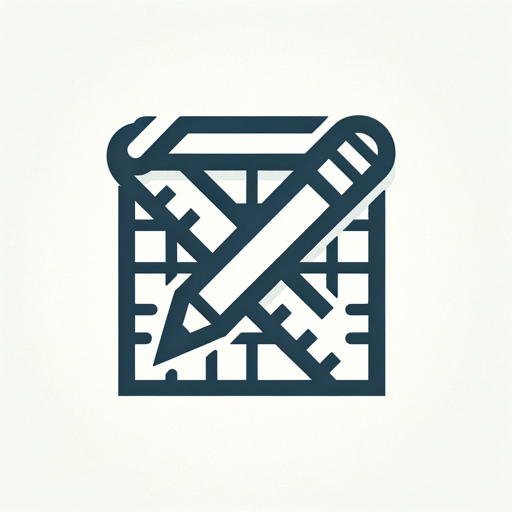Organizational Architect-AI-powered workforce management
Optimize your workforce with AI
How can I structure my startup?
What roles are essential for a small business?
Can you suggest a department layout for a tech company?
How to improve our current organizational structure?
Related Tools
Load More
Software Architect GPT
Builds new software architecture documents by understanding user requirements and design constraints

Solution Architect
Formal, thorough, and friendly architect for solutions and ADRs.

Org Chart Genius
Revolutionize team management with Org Chart Genius. This tool streamlines the creation of interactive organizational charts for HR professionals and managers, enhancing company structure insights. Explore a live example here https://heyidb.com/organizati

Organizational Chart Architect
Seasoned expert in crafting detailed organizational charts for businesses.

Organogram Architect
Specialist in Organizational Structures for Comprehensive Organograms

Technical Architect
Seasoned technical architect with experience designing complex enterprise systems.
20.0 / 5 (200 votes)
Introduction to Organizational Architect
The Organizational Architect is designed to optimize workforce efficiency and structure responsibilities within hospitality groups, focusing on streamlining operations for restaurants and beach hotels. The purpose is to enhance organizational efficiency, improve staff management, and ensure seamless coordination between different segments. For example, in a multi-restaurant chain, the Organizational Architect might restructure staff roles to ensure that peak operation times are adequately covered without overstaffing during slower periods. In a beach hotel, it could optimize the front desk operations by reallocating tasks between receptionists and concierges to enhance guest satisfaction.

Main Functions of Organizational Architect
Workforce Optimization
Example
Reassigning tasks among kitchen staff in a busy restaurant to ensure even workload distribution.
Scenario
In a high-volume restaurant, during peak hours, the Organizational Architect might recommend assigning a specific chef to handle only appetizers while another focuses on main courses, ensuring that each section operates smoothly and efficiently.
Role Definition and Structuring
Example
Defining clear roles for hotel front desk staff to avoid overlap and increase efficiency.
Scenario
At a beach hotel, the Organizational Architect could delineate roles such that one receptionist handles check-ins while another focuses on guest services, reducing wait times and improving overall guest experience.
Coordination and Communication Enhancement
Example
Implementing a communication system between kitchen and waitstaff to streamline order processing.
Scenario
In a multi-restaurant setup, the Organizational Architect might introduce a digital order tracking system that allows waitstaff to see real-time updates from the kitchen, reducing errors and improving service speed.
Ideal Users of Organizational Architect Services
Hospitality Group Managers
Managers overseeing multiple restaurants or hotels would benefit from Organizational Architect services by gaining insights into optimizing staff roles, improving operational efficiency, and enhancing overall customer service quality.
Human Resources Professionals
HR professionals within the hospitality industry can use Organizational Architect to better structure job roles, develop effective training programs, and implement efficient communication systems, ultimately leading to a more productive and satisfied workforce.

How to Use Organizational Architect
Step 1
Visit aichatonline.org for a free trial without login, also no need for ChatGPT Plus.
Step 2
Explore the various features and functionalities of the tool by navigating through the interface and accessing the provided tutorials.
Step 3
Identify the specific needs of your organization, such as workforce optimization, role structuring, or task allocation.
Step 4
Input relevant data about your organization, including staff details, operational requirements, and existing challenges, to get customized recommendations.
Step 5
Review the suggestions and implement the recommended changes gradually, monitoring the impact and making adjustments as needed for optimal efficiency.
Try other advanced and practical GPTs
The Melanin Canvas
AI-powered illustrations for African American subjects.

Design Digital Art For POD
Transform images into digital art effortlessly with AI.
ArchitectGPT
AI-powered custom home design

Data Science
AI-Powered Data Science Insights

Italian
Enhance your Italian with AI precision

Cartoonize Family Photo
Turn your photos into charming cartoons with AI

THOMAS | Avatar Utópico de Social Media
AI-Powered Social Media Engagement

Red Bubble SEO Generator
AI-powered SEO for Redbubble Listings

Bio Article Generator
AI-Powered Bio Writing Made Easy

课研宋老师
AI-driven course creation made easy

Watercolor Gnome
AI-Powered Watercolor Gnome Illustrations.
ComradeChat
Dynamic AI for Personalized Interaction

- Efficiency Boost
- Workforce Optimization
- Role Structuring
- Task Allocation
- Operational Analysis
Common Questions about Organizational Architect
What is Organizational Architect designed for?
Organizational Architect is designed to optimize workforce management and structure responsibilities within various positions of an organization, ensuring efficient operations and improved productivity.
Can Organizational Architect be used for different industries?
Yes, while it is particularly tailored for the hospitality industry, Organizational Architect can be adapted for various sectors needing workforce and task optimization.
How does Organizational Architect improve team structures?
It analyzes the current team setup, identifies inefficiencies, and provides recommendations for role redefinitions, task allocations, and improved coordination between different segments.
Do I need technical expertise to use Organizational Architect?
No, the tool is user-friendly and designed to be accessible to individuals without technical expertise. It provides intuitive interfaces and clear guidance throughout the process.
What kind of data is needed to get started with Organizational Architect?
You need to provide data about your staff, their roles, operational workflows, peak operation times, and any specific challenges your organization faces. This helps in generating accurate and actionable recommendations.